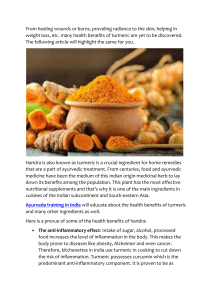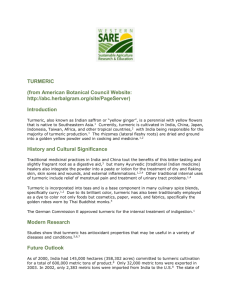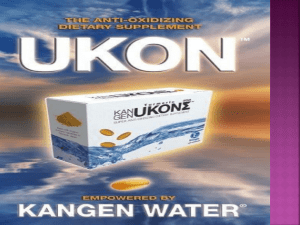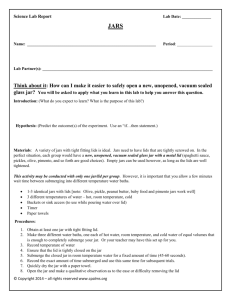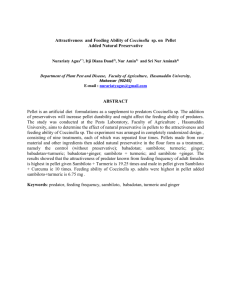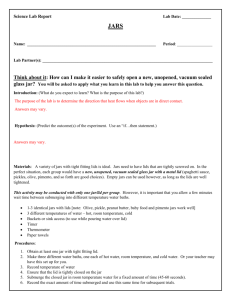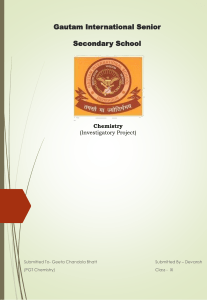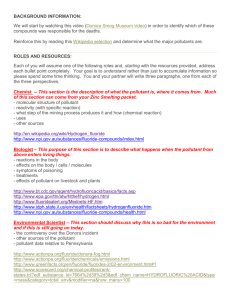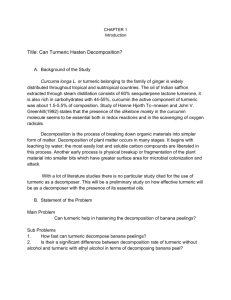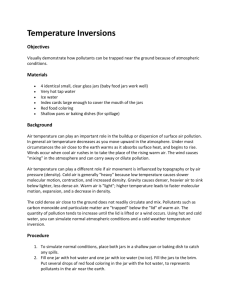WORD - Molecular Design Research Network (MoDRN)
advertisement
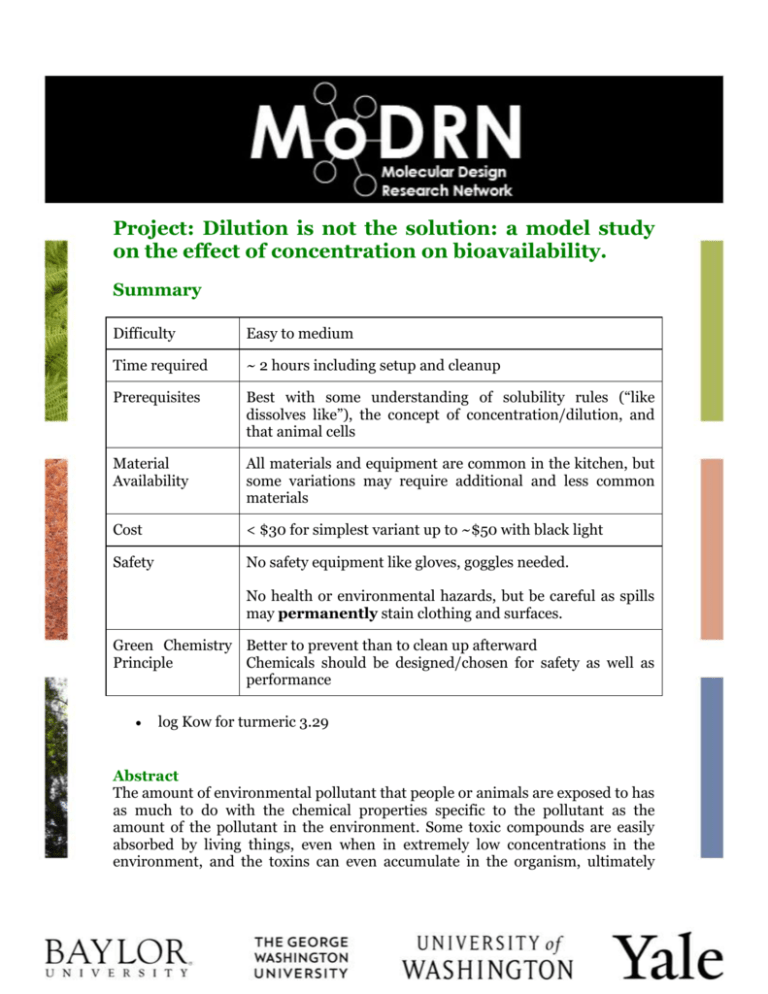
Project: Dilution is not the solution: a model study on the effect of concentration on bioavailability. Summary Difficulty Easy to medium Time required ~ 2 hours including setup and cleanup Prerequisites Best with some understanding of solubility rules (“like dissolves like”), the concept of concentration/dilution, and that animal cells Material Availability All materials and equipment are common in the kitchen, but some variations may require additional and less common materials Cost < $30 for simplest variant up to ~$50 with black light Safety No safety equipment like gloves, goggles needed. No health or environmental hazards, but be careful as spills may permanently stain clothing and surfaces. Green Chemistry Better to prevent than to clean up afterward Principle Chemicals should be designed/chosen for safety as well as performance log Kow for turmeric 3.29 Abstract The amount of environmental pollutant that people or animals are exposed to has as much to do with the chemical properties specific to the pollutant as the amount of the pollutant in the environment. Some toxic compounds are easily absorbed by living things, even when in extremely low concentrations in the environment, and the toxins can even accumulate in the organism, ultimately leading to concentrations significantly higher than found in the environment, and manifesting toxic effects. This project illustrates that the traditional way of treating a liquid waste by dilution until low concentration is reached is not a real solution to the problem. Even if the pollutant is very diluted, it is still present in the environment and can harm humans and environment. The only difference is that pollutant is in the larger volume of solvent. Hypothesis/Research Question How much pollutant ends up in our bodies? Materials Needed Finely ground turmeric powder (a strongly colored spice, not a pollutant) Water (tap or distilled) Vegetable or mineral oil (as clear and colorless as possible) Clear glass jars with water tight metal lids (1 quart/1 liter jars, at least 5) Measuring spoons (1/2 tsp, 1 tsp and 1 tbsp) Procedure One half teaspoon of turmeric powder is added to an empty jar. Then the jar is half filled with water, lid tightly sealed and shaken vigorously for 20 seconds and set down for another 20 seconds. This will be your concentrated (undiluted) starting material. Then transfer two tablespoons of the resulting bright yellow liquid to each of three new jars (clean and dry). Fill the first jar 1/8 of the way with water (1/2 cup), the second jar 1/2 of the way (2 cups), and the last to the top (4 cups). Leave one jar half filled with water, but with no turmeric added (as a control). Add one teaspoon of vegetable or mineral oil to each of the four jars. Screw the lids on tightly, and shake them vigorously for 60 seconds. Set the jars down and allow it to separate for 15 minutes (if separation look awful, let it sit overnight). Observations Note how strongly colored each of the turmeric/water mixtures is. How much water do you have to add to make the color imperceptible? Note how strongly colored each of the oil samples is after contact with the turmeric/water mixtures. How does the water dilution affect the contamination of the oil? Why do we have to test the jar with oil and water, but no turmeric? What is the purpose here/what are we controlling for? Why is oil a good model for an animal or person in this study? Variations Use a black light to see the fluorescence of the turmeric in addition to its color. This should make it easier to see (especially if the oil is already yellow). Plus this is a really cool effect. Test a variety of pigments to see how many of them separate like this. Propose a way to quantify (measure) how much turmeric ends up in the oil, if can you should try it!
